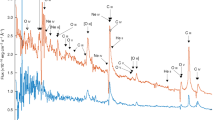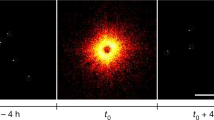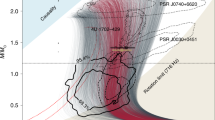Abstract
THE discovery of this star in the early morning of December 13 by Mr. J. P. M. Prentice at Stowmarket was kindly reported to the Solar Physics Observatory at Cambridge by the Astronomer Royal later in the same morning. Watch has been kept the whole of each night since, the star being circumpolar, and spectra were obtained with the Newall telescope in the early mornings of December 14 and 15. The spectrum is of the usual Nova type, just after maximum brightness, consisting of bright bands of hydrogen and of ionised metals with absorption borders on the side of shorter wave-length. The unusual features on this occasion are the outstanding strength of the displaced absorption lines due to Mg II at 4481 and the fact that the velocity of approach given by the hydrogen and other absorption lines has shown a decrease from about 500 km./sec. to about 250 km./sec. between December 14 and 15. This decrease of the velocity of the first outburst was shown by Nova Geminorum 1912, but it is not a usual feature in Novæ.
This is a preview of subscription content, access via your institution
Access options
Subscribe to this journal
Receive 51 print issues and online access
$199.00 per year
only $3.90 per issue
Buy this article
- Purchase on SpringerLink
- Instant access to full article PDF
Prices may be subject to local taxes which are calculated during checkout
Similar content being viewed by others
Author information
Authors and Affiliations
Rights and permissions
About this article
Cite this article
STRATTON, F. The New Star in Hercules. Nature 134, 974 (1934). https://doi.org/10.1038/134974a0
Issue date:
DOI: https://doi.org/10.1038/134974a0



